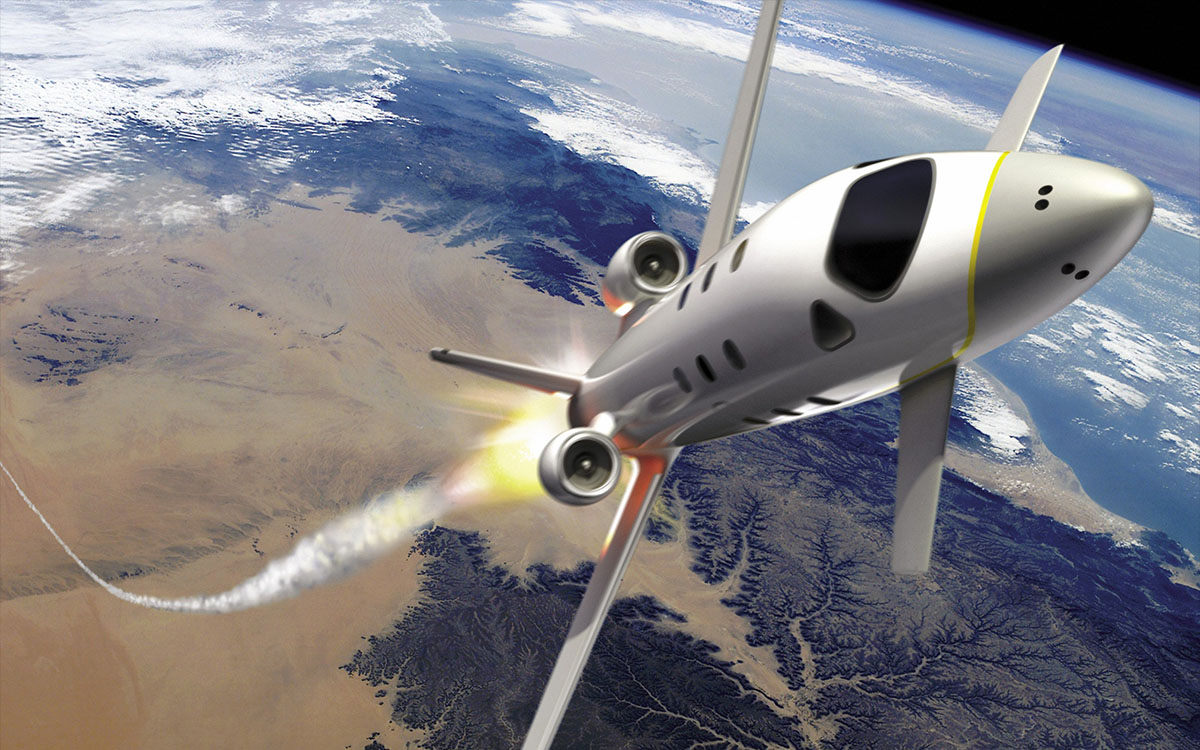getting ready for orbital chaos

When the first sub-orbital and orbital planes take to the air, managing them will be a fairly easy task. There will be few of them, they’ll have plenty of time to prepare, plan and coordinate their flights. But looking into the future in which flights to the Karman line and above are common, we may be facing a whole lot of problems in managing space traffic unless we start thinking about an orbital infrastructure soon. Nobody wants to see a casual flight into space end in a disaster worthy of a sci-fi movie’s opening sequence.
In several interviews about his work with Virgin Galactic, designer Burt Rutan made a big point to mention his number one concern in spacecraft design. Safety. Obviously, if you’ve worked around planes or in the aviation industry, safety is not just a mantra for the boardroom. When a plane goes down, you immediately rush to see if it was a plane operated by your company. A perfect or near-perfect safety record is essential to keeping your company in business so any lapse in safety inspections is punished harshly by both the managers and the FAA. But Rutan’s speech wasn’t just to reassure future customers. His point was that space flight was a hundred times more dangerous than flying in an airplane and that the challenges Spaceship Two would face in making sure the trip was safe were not to be underestimated.
People often mistake airplanes for flying busses. You get on, the pilot turns the key, the whole contraption takes off and moving really fast gets you to another city. Ah, but that’s not so. As flight became an everyday commodity rather than a luxury decades ago, the ability of a plane to fly has been taken for granted. However, getting a big, heavy structure high into the air (and yes, there is a reason why planes fly between 35,000 and 42,000 feet) is no easy task and how much weight the plane has, how that weight is distributed, and in what order it’s loaded matter a great deal. If you upset how the plane is balanced, how close to another plane’s wake it takes off or take off in weather which could make flight difficult, your balancing your schedule with the need for safety. There’s also the constant need to check for metal fatigue that occurs with the constant stresses of flight. The same considerations that have to go into flying an airplane are tremendously magnified when that plane is supposed to launch into space.
But it’s not just the stresses of takeoff or rocket assisted high altitude flight which put virtually every material we know how to build to its structural limits. There are other dangers in space. Space junk, satellites which could sideswipe an off course space plane, launches from another nation which haven’t been logged with a central planetary control tower and are screaming half blindly into space at Mach 3 or Mach 5, all create a dangerous situation where a collision could be a very real threat. Commercialization of space and the future of casual space travel usually gets compared to today’s seas in which a series of customs and mutual communication keeps risks of accidents to a minimum in places where there’s no port authority or local pilots who’ll guide the ship around obstacles. But this comparison just doesn’t work when it comes to our orbital zoo where everything is moving at incredible speeds.
Imagine yourself behind the controls of a modern cargo ship on the open sea. Only you’re not chugging along at just 20 odd knots. Oh no, you’re flying between 2,300 and 17,000 miles per hour and everything that passes you by is going at least as fast as you or faster. Another ship, maybe a good deal bigger than yours, could plow into you without you knowing what happened until it was too late. A much better comparison of what space without some sort of navigation and traffic control center would be like, is an airport without a radar tower, ATC or an air boss. Every plane is pretty much for itself and pilots have seconds to avoid a high speed impact. Oh and throw in random scarps of metal flying around at about the same speed as the aircraft and you get the picture. Granted, this is a scenario for the year 2040 but it is a very real concern.
A single crash in space could send the space tourism industry back to the stone age and doom its potential. Their business plans rely on casual passengers going on a micro-cruise of sorts and the revenue from these trips would pay for their expansion plans. At first, with just two or three companies flying at the same time, it would be easy to keep track of everything in the sky. As space tourism expands, however, and traffic in space surges, we need to have a framework by which we can help space planes avoid dangers from each other, satellites and government agencies working in space or launching interplanetary probes. Having the framework would go a long way towards boosting investment in space travel as commercial space ventures start to mature and take on bigger and bigger projects.





